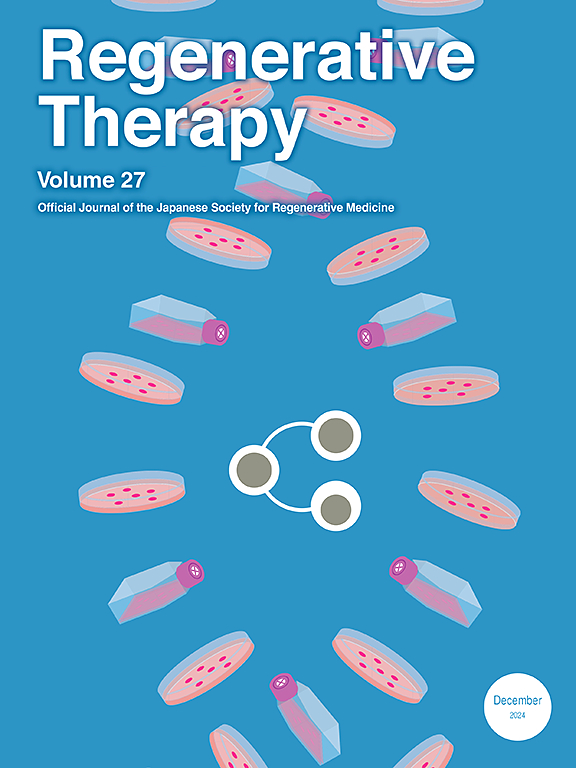Anastomotic leakage prevention using dry-preserved fibroblast cell sheets in esophageal reconstruction
IF 3.5
3区 环境科学与生态学
Q3 CELL & TISSUE ENGINEERING
引用次数: 0
Abstract
Background
Anastomotic leakage is a common and serious complication of esophageal reconstruction, and new methods are required for its prevention in clinical settings. We herein developed dry-preserved fibroblast cell sheets (dry sheets), which are easy to use and promote wound healing. This study aimed to investigate the efficacy of transplanting allogeneic dry sheets in preventing anastomotic leakage in a rat esophageal reconstruction model.
Methods
Allogeneic dry sheets were prepared from the rat oral mucosa. A rat esophageal anastomosis model was created, and two dry sheets were applied to cover the anastomotic sites. Anastomotic leakage incidence, burst pressure, histological findings, and collagen contents were compared between the control and dry sheet groups postoperatively.
Results
The dry sheet group demonstrated a lower incidence of anastomotic leakage than the control group (control: 64 % vs. dry sheet: 28 % on day 3, control: 57 % vs. dry sheet: 29 % on day 5). Abscess scores at the esophageal anastomotic sites were also lower in the dry sheet group than in the control group on days 3 and 5. Burst pressure was significantly higher in the dry sheet group than in the control group on days 3 and 5. Collagen type I was significantly increased in the dry sheet group compared with that in the control group.
Conclusions
Allogeneic dry sheet application improved anastomotic leakage incidence and burst pressure, indicating the usefulness of these sheets in preventing esophageal anastomotic leakage.
干保存成纤维细胞片预防食管重建吻合口漏
背景食管吻合口瘘是食管重建术中常见且严重的并发症,临床上需要新的预防方法。我们在此开发了干燥保存的成纤维细胞片(干片),它易于使用并促进伤口愈合。本研究旨在探讨同种异体干片移植对大鼠食管重建模型吻合口漏的预防作用。方法以大鼠口腔黏膜为材料,制备致肉瘤干片。建立大鼠食管吻合模型,用两张干布覆盖吻合部位。比较对照组和干片组术后吻合口瘘发生率、破裂压力、组织学表现及胶原蛋白含量。结果干片组吻合口瘘发生率低于对照组(第3天,对照组64% vs.干片28%;第5天,对照组57% vs.干片29%)。第3、5天,干片组食管吻合口脓肿评分也低于对照组。第3天和第5天,干片组的破裂压力显著高于对照组。与对照组相比,干片组I型胶原蛋白含量显著增加。结论同种异体干片的应用降低了吻合口瘘发生率和破裂压力,说明干片在预防食管吻合口瘘中的作用。
本文章由计算机程序翻译,如有差异,请以英文原文为准。
求助全文
约1分钟内获得全文
求助全文
来源期刊

Regenerative Therapy
Engineering-Biomedical Engineering
CiteScore
6.00
自引率
2.30%
发文量
106
审稿时长
49 days
期刊介绍:
Regenerative Therapy is the official peer-reviewed online journal of the Japanese Society for Regenerative Medicine.
Regenerative Therapy is a multidisciplinary journal that publishes original articles and reviews of basic research, clinical translation, industrial development, and regulatory issues focusing on stem cell biology, tissue engineering, and regenerative medicine.
 求助内容:
求助内容: 应助结果提醒方式:
应助结果提醒方式:


